
Ukrainian importers in January-August fully used quotas for duty-free import of pork from the European Union, further import of chilled pork will be subject to a 12% duty, and frozen pork – 10%, this was reported on the website of the Pig Breeders of Ukraine association. “As of September 1, some 20,000 tonnes of chilled and frozen pork from the EU countries were brought to Ukraine. This corresponds to the quota for duty-free supply of pork from the European Union countries established under the economic part of the Association Agreement. Since these limits have been used this year, each next kilogram of European chilled pork will cost importers 12% more due to the duty, and frozen pork meat will rise in price by 10%,” the organization said.
According to the association, there has been some recovery in import activity this year, which confirms the use of the pork import quota in August, while in previous years the import quota was used in November-December.
It clarified that Ukrainian importers have similar agreements on duty-free supplies of up to 14,400 tonnes of pork from Canada (the quota was used by 9%) and up to 1,700 tonnes from the UK (no deliveries from this country were made in 2021).
“If the import of raw meat from these countries becomes economically attractive for the importer, the supply of frozen pork is unlikely to have a significant impact on the domestic pork market. In addition, the expected changes in exchange rates in the fall will also increase the entry barrier for imported raw materials,” the association concluded.
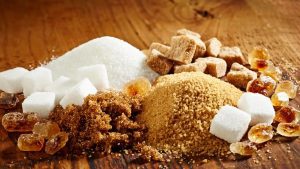
From February 5, 2021, the Economy Ministry will start accepting applications as part of the distribution of the tariff quota for the import of raw cane sugar into Ukraine among importers.
As reported on the website of the Economy Ministry on Monday, the quota for the import of raw sugar in 2021 was set at 260,000 tonnes.
According to the State Statistics Service, in 2020, Ukraine imported 1,880 tonnes of sugar for $1.8 million, which is 39.2% and 9.8% more compared to 2019. Export of sugar from Ukraine in the past year amounted to 150,600 tonnes in quantity terms and $59.34 million in monetary terms, having decreased compared to 2019 by 30.3% and 36.4%, respectively.
According to the National Association of Sugar Producers Ukrtsukor, as of January 12, sugar production in Ukraine in the 2020/2021 marketing year amounted to 1.021 million tonnes, while the forecast for the entire marketing year was of 1.2 million tonnes, which is 15% less than in 2019/2020 marketing year. In this marketing year, 30 sugar factories operated in the country, which processed 7.7 million tonnes of sugar beet.
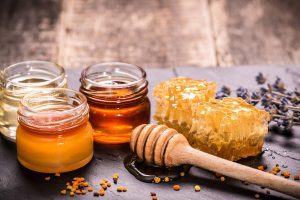
The renewal of the Association Agreement between the European Union and Ukraine next year can give a new impetus to the development of the Ukrainian honey industry, strengthen the country’s position in the EU market and reduce its dependence on the supply of Chinese honey, which now forms about 40% of the total supplies in this direction, national consultant to the Food and Agriculture Organization of the United Nations (FAO) Hanna Burka has said.
Now the Ukrainian honey market depends on supplies to the European Union, whose share in the total volume of Ukrainian honey exports exceeds 80% (in 2019 – 86%, in 2018 – 80%, in 2017 – 74% ). The EU countries are considered the largest honey importers in the world and about 40% of honey needs are met by imports, she said on her Facebook page.
“The signing of the Association Agreement between Ukraine and the European Union, within the framework of which a deep and comprehensive free trade zone began to function, contributed to an increase in purchasing countries and an increase in the export of Ukrainian honey, and, accordingly, the flow of foreign exchange earnings into the country,” Burka wrote.
So, in 2017, Ukraine exported 47,100 tonnes of honey to the EU, in 2018 – 41,000 tonnes, and in 2019 – 45,000 tonnes.
“A year after the signing of the Agreement, the number of enterprises that had the right to supply honey to the markets of the European Union increased to 52, and by the end of 2019 it was 72,” the FAO consultant said.
In addition, the share of Ukraine in the import of honey to the EU countries also increased, if in 2013 it was 10%, then in 2019 it reached 22% (in 2018 – 20%, in 2017 – 23%). Accordingly, Ukraine became No. 2 supplier of honey to Europe, with China ahead.
“During the FTA, Ukrainian honey exporting companies are actively using the possibilities of duty-free tariff quotas. Both the main and additional preferential quotas for honey were used in the first days of the month. Despite the fact that the extra-quota volume is subject to an import duty of 17.3%, the export volumes of Ukrainian honey continue to increase. The current export volume is seven-eight times higher than the annual volume of the total quota, which confirms the interest of European partners in Ukrainian honey,” Burka said.
According to her, it is obvious that the current volume of the quota (in 2017, the main quota was 5,200 tonnes, in 2018 – 5,400 tonnes, in 2019 – 5,600 tonnes, in 2020 – 5,800 tonnes; additional 2,500 tonnes was not revised) does not suit both the demand of Europe and the possibilities of the Ukrainian honey industry.
“The next Ukraine-EU negotiations should be aimed at both increasing the duty-free quota and reducing customs tariffs. As an example, the EU-Mexico cooperation model can be used, for which the preferential quota is 30,000 tonnes at a rate of 8.6%,” said the expert.
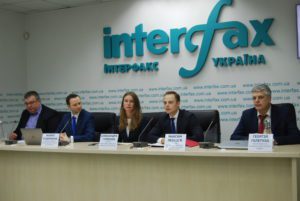
On December 5, 2019, at 10:00, a press conference initiated by the European-Ukrainian Energy Agency regarding the future of bioenergy projects in Ukraine took place at the press center of the Interfax-Ukraine news agency.
Speakers:
Oleksandra Gumeniuk – Director of European-Ukrainian Energy Agency (EUEA)
Max Lebedev – Member of the Board of European-Ukrainian Energy Agency, Partner of GOLAW
Michael Rutherford – Development Director of Khmelnytskyi Biofuel Power Plant (KBPP)
Georgy Geletukha – Chairman of the Board of the Bioenergy Association of Ukraine (BAU)
In May 2019, the Verkhovna Rada adopted a law “On Amendments to Certain Laws of Ukraine on Ensuring Competitive Conditions for Generation of Electricity from Alternative Energy Sources”, which substantially changes the rules of the game for the participants of the green energy market. According to the provisions of this law, as of January 1, 2020, entities implementing renewable energy projects (RES) will be able to obtain state support only if they participate in the auction with the support quota allocation and only if they win.
The Ministry of Energy recently issued indicative state support quotas for auctions, which will total around 50 MW per year for biomass, biogas and small hydropower producers.
Such small quotas, experts warn, make it impossible to implement large projects and lead to an outflow of investors who have already entered the market. Foreign investors who have already invested heavily in the development of bioenergy projects in Ukraine will have to abandon their plans due to the inability to obtain guaranteed state support. As a result, the development of biomass electricity production may stop altogether, and projects that are already underway will be frozen.
One of the examples is the Khmelnytskyi biofuel power plant. A group of foreign investors from Ireland and the UK is planning to build a 46 MW bio-power plant that will produce biomass electricity. The project is now in its final stages and is awaiting the first auction to secure funding. The investor has already invested 1.4 million euros in its implementation. In the future, the investor group intends to build 10 more similar stations in other regions of Ukraine, investing more than $2 billion in them and creating 5 thousand new jobs.
However, these intentions may not be realized, as the quotas proposed by the Government do not allow even one project to potentially obtain the necessary quota of state support.
This provision, say representatives of the KBPP, could cause a situation where large-scale biomass projects will not be able to obtain the necessary capacity, which will block the development of the projects needed for the grid.
Market experts also say that compared to other sources of alternative energy, biomass is the most efficient and solves a number of problems typical of solar and wind plants. In particular, it enables uninterrupted power generation in 24/7 mode, efficient use of farm by-products, opening up sources of additional income for farmers and balancing the grid.
Therefore, this industry needs additional support from the state, and therefore they propose to consider increasing the quota or introducing an additional quota for stable generation facilities.
«What we are calling for are levels of quotas which are sufficient to allow the biomass sector to attract investment at a suitable scale to assist with the balancing issues the country is facing whilst also providing jobs and economic prosperity» – emphasized Michael Rutherford, Development Director of Khmelnytskyi Biofuel Power Plant.
European-Ukrainian Energy Agency, established in 2009, unites investors from Austria, Belgium, Great Britain, Norway, Spain, Switzerland, Turkey, Ukraine, the USA and other countries that implement renewable energy projects in Ukraine using solar, wind and bio-energy (around 2 GW of operational renewable power plants, 0.5 GW under construction, 2 GW with signed pre-PPAs). http://euea-energyagency.org/.
Video of the press conference is here
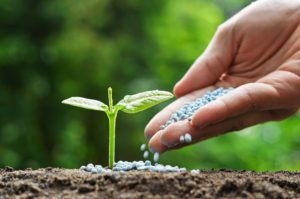
The Ukrainian Chemists Union considers it necessary to introduce quotas for imports of fertilizers, which will make it impossible for Russian manufacturers to bypass trade restrictions and load Ukrainian plants at full capacity.
“We propose the introduction of quotas for complex and nitrogen fertilizers for all countries in order to preserve the historical balance of imports. Each country will supply its products to the extent it has historically supplied, this will make impossible for Russian manufacturers to bypass trade restrictions and load the plants at full capacity,” Ihor Holchenko, the vice president of the union and the director for regulatory policy of Group DF, told Interfax-Ukraine.
According to him, this protective mechanism is applied in the countries where there is a threat of damage from growing imports. The introduction of quotas will be preceded by an investigation by the Ministry of Economic Development and Trade. According to Holchenko, quoting will give a clear picture of how much to produce, while regulators will monitor abuse.
The expert said there is no shortage of nitrogen and complex fertilizers in the Ukrainian market: the country provides itself with nitrogen fertilizers, and it can cover 800,000 tonnes that were supplied from the Russian Federation by increasing domestic production.
As for nitrogen fertilizers, Ukrainian enterprises are not loaded at full capacity, as well as for complex ones, where the load is up to 12%. Complex fertilizers in Ukraine are produced by Sumykhimprom and Dniprovsky Plant of Mineral Fertilizers. Ukraine can produce 700,000 tonnes of complex fertilizers, but in 2018 it produced only about 40,000 tonnes.
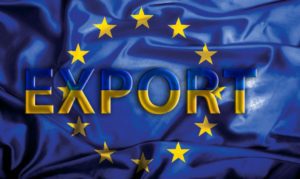
Ukraine in 2018 used 11 out of the 40 quotas for duty-free exports under the free trade area (FTA) agreement with the European Union, while export quotas for processed products from oil, sugar syrups, and an additional quota for exports of mushrooms were not used at all, according to the Ministry of Economic Development and Trade.
Ukraine has not yet received permission to export red meat, therefore its companies also did not use the quota for pork, lamb, and beef. The remaining quotas were used partially, the ministry said.
In 2018, the country fully used quotas for exports of corn, honey, corn flour and granules, grape and apple juice, processed tomatoes, processed malt and starch, soft wheat, wheat flour and granules, barley grits and starch flour, and the major quota for exports of poultry and semi-finished products from it.
In 2018, the main quota for exports of mushrooms was used by 0.03%, the quota for exports of cigarettes by 0.01%, food products by 0.9%, processed products from dairy cream by 4.2%, ethanol by 10.4%, processed products from sugar by 13.9%, milk, yoghurt and cream by 15%, barley by 16.6%, dairy products by 22.1%, milk powder by 24.1%, and oats by 36.5%.
In addition, Ukraine has used the basic quota for exports of eggs by 74.6%, and an additional one by 48.3%.